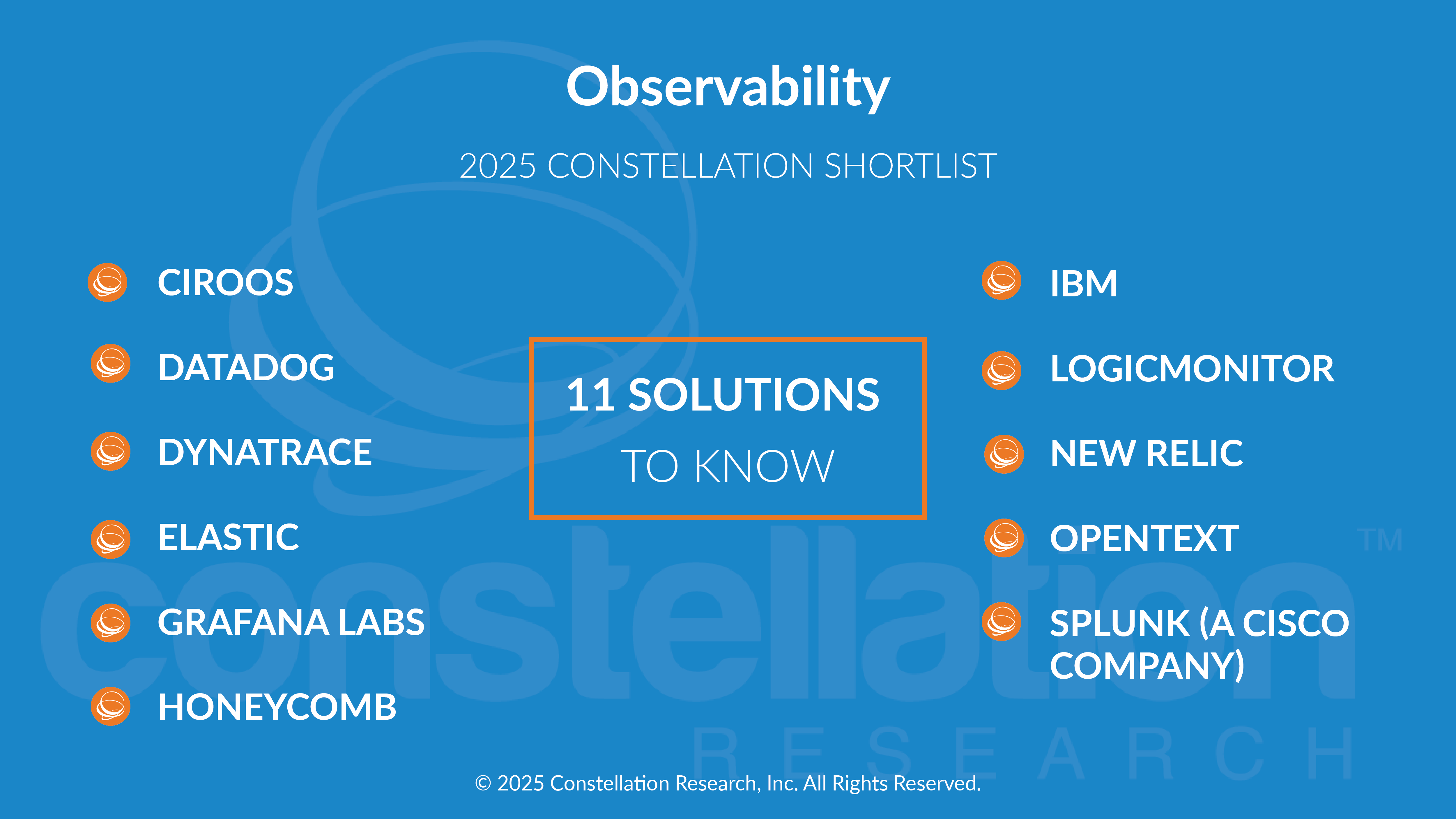
About This Constellation ShortList™
Modern applications are distributed, containerized, and deployed across hybrid and multi-cloud environments. This complexity has outgrown traditional monitoring tools, which were designed to detect when something breaks—not explain why. Observability addresses this gap by offering a unified, real-time view into the internal state of systems through telemetry data: logs, metrics, traces, and events.
Today, observability is essential for resilient operations, fast incident response, and continuous improvement. It helps engineering and SRE teams answer critical questions: What went wrong? Where did it happen? Why did it happen? Leading platforms don’t just collect data—they correlate context across the stack, visualize dependencies, and increasingly use AI and machine learning to surface anomalies, predict failures, and automate remediation.
As organizations adopt DevOps, site reliability engineering (SRE), and platform engineering practices, observability has become a core capability—not just for troubleshooting, but for ensuring uptime, accelerating release cycles, and managing user experience at scale.
Threshold Criteria
Constellation considers the following criteria for these solutions:
- Support for all telemetry types (logs, metrics, traces, events) A modern observability platform must ingest and correlate multiple forms of telemetry to provide a complete picture of system health and behavior.
- OpenTelemetry and cloud-native integration Seamless support for Kubernetes, containers, microservices, and open-source standards like OpenTelemetry is essential for visibility across modern architectures.
- Real-time dashboards and alerting Teams rely on live, customizable visualizations and threshold- based alerts to monitor performance and respond quickly to anomalies.
- Infrastructure and application dependency mapping Effective observability tools map relationships across services, applications, and infrastructure to accelerate root cause analysis and impact assessment.
- Scalable data ingestion and retention Platforms must handle high-volume, high-cardinality data without performance degradation, ensuring fast queries and long-term visibility. Differentiators
- AI-assisted root cause analysis and alert suppression Advanced platforms use machine learning to identify patterns, reduce alert noise, and pinpoint root causes across complex dependencies—freeing teams from manual correlation work.
- Generative AI for incident summarization and remediation suggestions Use of generative AI to produce natural-language explanations of incidents, suggest next steps, and auto-generate change summaries and postmortems.
- Proactive anomaly prediction and automated incident response Leveraging historical data and AI models to predict potential issues and trigger automated workflows to mitigate them before they impact users.
- Multi-domain observability across infrastructure, application, network, and security layers Extending observability beyond application performance to include network telemetry, cloud infrastructure, and
The Constellation ShortList™
Constellation evaluates more than 30 solutions categorized in this market. This Constellation ShortList is determined by client inquiries, partner conversations, customer references, vendor selection projects, market share and internal research.
- CIROOS
- DATADOG
- DYNATRACE
- ELASTIC
- GRAFANA LABS
- HONEYCOMB
- IBM
- LOGICMONITOR
- NEW RELIC
- SPLUNK, A CISCO COMPANY
Frequency of Evaluation
Each Constellation ShortList is updated at least once per year. Updates may occur after six months if deemed necessary.
Evaluation Services
Constellation clients can work with the analyst and the research team to conduct a more thorough discussion of this ShortList. Constellation can also provide guidance in vendor selection and contract negotiation.


